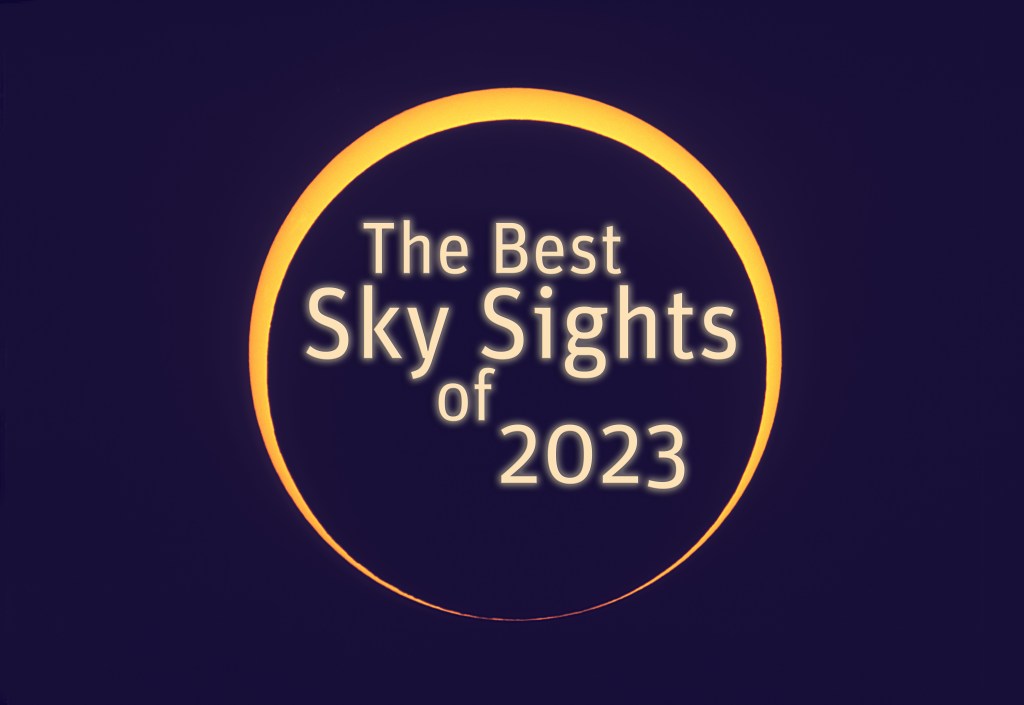
Here’s my preview of some of the best celestial events for 2023. Mine is certainly not an exhaustive list. I’ve picked just one event per month, and I’ve focused on events best for unaided eyes or binoculars, and visible from North America. (So the solar eclipse of April 20 visible from Australia and the South Pacific, and the two minor lunar eclipses this year don’t make the cut!)
For most events, unless otherwise stated, the scene depicted is for southern Ontario, Canada. However, the view will be similar from other locations. All sky charts were created with SkySafari software, available here for desktop and mobile devices.
Click or tap on any of the illustrations to bring up a full-screen view with more detail and readable labels!
JANUARY

As 2023 opens, Venus is beginning its climb into the evening sky, while Saturn is sinking into the sunset. The two planets pass each other on Sunday, January 22, when they appear just one-third of a degree apart in the twilight. Use binoculars to pick out dimmer Saturn. And look for the thin day-old crescent Moon just over a binocular field below the planet pair.
FEBRUARY

A month later, on Wednesday, February 22, Venus has now ascended higher, preparing to meet up with descending Jupiter. But before they meet, the crescent Moon, with its dark side lit by faint Earthshine, joins the planets in a particularly close conjunction with Jupiter. They will appear about 1° (two Moon diameters) apart, with Venus about a binocular field below.
MARCH
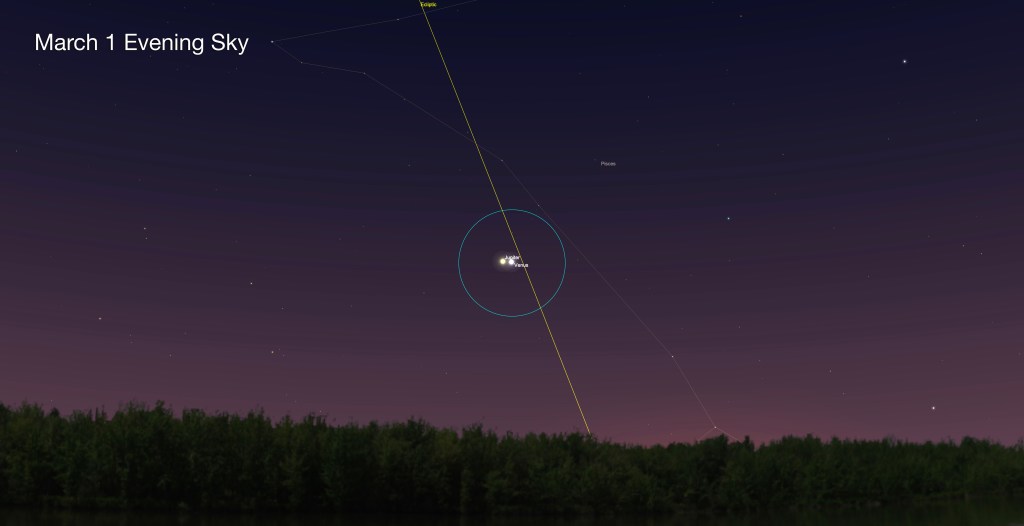
Here’s a date to circle on your calendar. On Wednesday, March 1 the sky’s two brightest planets, Venus and Jupiter, pass within half a degree of each other, in arguably the year’s best conjunction. They’ll be close enough to frame nicely at medium power in a telescope, though the featureless gibbous disk of Venus will appear small, about the third the size of Jupiter’s banded globe. But Venus is by far the brighter of the two worlds.
APRIL

If you want to check Mercury off your sighting list this year, this is a good week to do it. On April 11 Mercury reaches its greatest angle away from the Sun in the evening sky, and for northern hemisphere viewers, is angled at its highest in the western sky. Even so, look just a binocular field above the horizon. While you’re at it, look higher for the fine sight of Venus near the Pleiades star cluster.
MAY
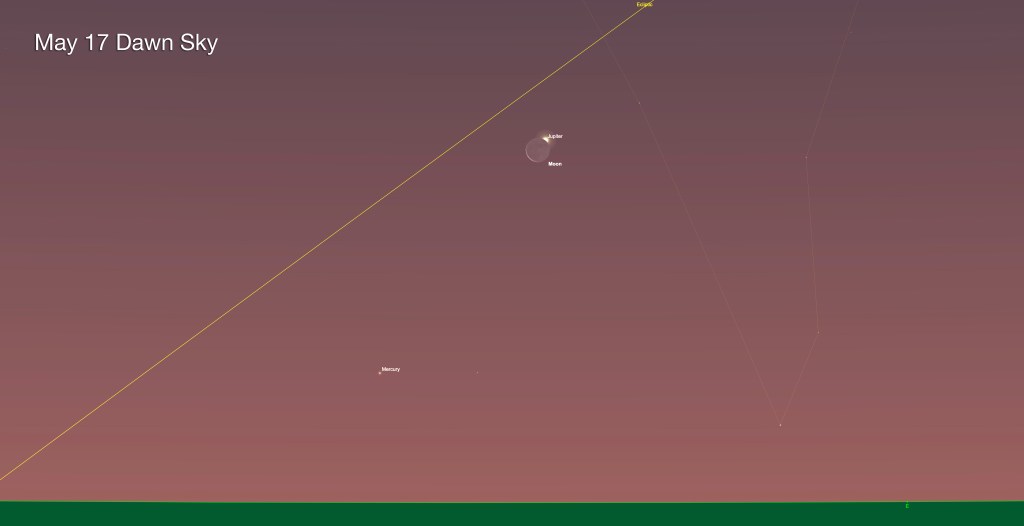
Wednesday, May 17 brings a chance to see the crescent Moon pass in front of Jupiter. But it will be a tricky event to catch. While most of North America and parts of Northern Europe can see the occultation, it occurs in the daytime sky with the Moon only 25° west of the Sun. However, locations along the West Coast of North America can see either the start or end of the occultation in a bright pre-dawn sky. Vancouver, Canada sees Jupiter disappear before sunrise, while Los Angeles – the view shown above – sees Jupiter reappear just before sunrise. Other locations will see a close conjunction of the Moon and Jupiter low in the dawn sky.
JUNE

As June opens we have Venus still shining brightly in the evening below much dimmer Mars, now far from the Earth and tiny in a telescope. But it’ll be worth a look this night even in binoculars as the red planet passes in front of the Beehive star cluster, also known as Messier 44. If you miss June 2, Mars will be close to the Beehive the night before and after.
JULY
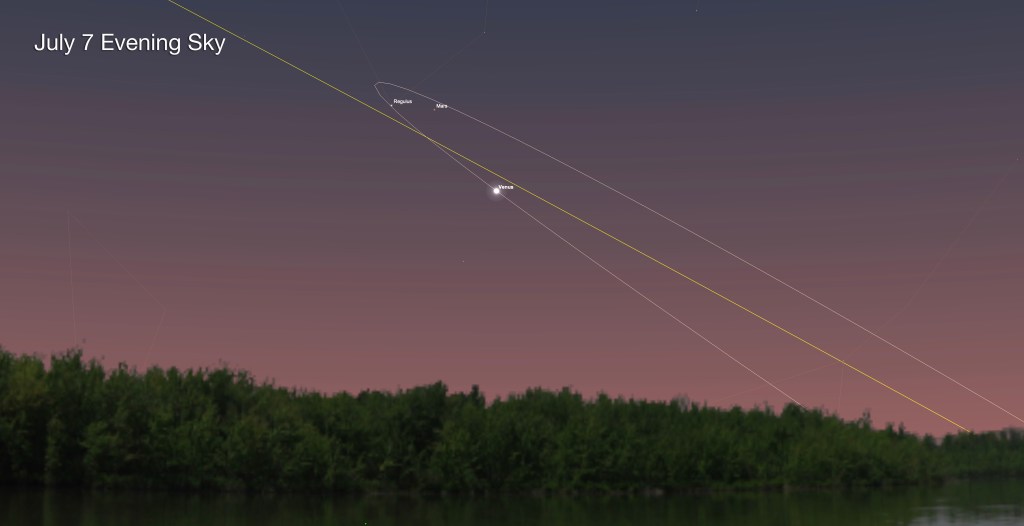
Venus has been bright all spring, but on July 7 it officially peaks at its maximum brilliance, reaching a blazing magnitude of -4.7. It reached its greatest angle from the Sun a month earlier on June 4 and is now dropping closer to the Sun each evening. But you still can’t miss it. What you might miss is dim Mars above, now close to the star Regulus in Leo. Mars passes 3/4 of a degree above Regulus on July 9 and 10. You’ll need binoculars to pick out the pairing.
AUGUST

Everyone looks forward to the annual summer stargazing highlight – watching the Perseid meteor shower. This is a good year, with the peak hour of the shower falling in the middle of the night of August 12/13 for North America. That’s a Saturday night! But most importantly, the waning Moon doesn’t rise until the wee hours, as shown here, so its light won’t wash out the meteors. Plan to be at a dark site for an all-night meteor watch.
SEPTEMBER

By September Venus has made the transition into the morning sky and shines at its greatest dawn-sky brilliance on September 19. It will then be joined by Mercury, with the inner planet reaching its greatest angle away from the Sun on September 22 shown here. This is the best morning appearance of Mercury for Northern Hemisphere observers. The view this morning bookends the view five months earlier on April 11. If you are away from urban light pollution, also look for the faint glow of Zodiacal Light in the pre-dawn sky before Mercury rises.
OCTOBER

October is solar eclipse month! On Saturday, October 14 the shadow of the Moon passes across all of North America and most of South America. Everyone on those two continents sees a partial eclipse of the Sun. But those along a narrow path sweeping across the western U.S. and down into Mexico, Central America and across northern South America can see a rare “ring of fire” eclipse as the Moon’s dark disk eclipses the Sun, but isn’t quite large enough to totally cover it. This is an “annular” eclipse. The view above is from Albuquerque, New Mexico, one of the largest U.S. cities in the path of annularity, second only to San Antonio, Texas.
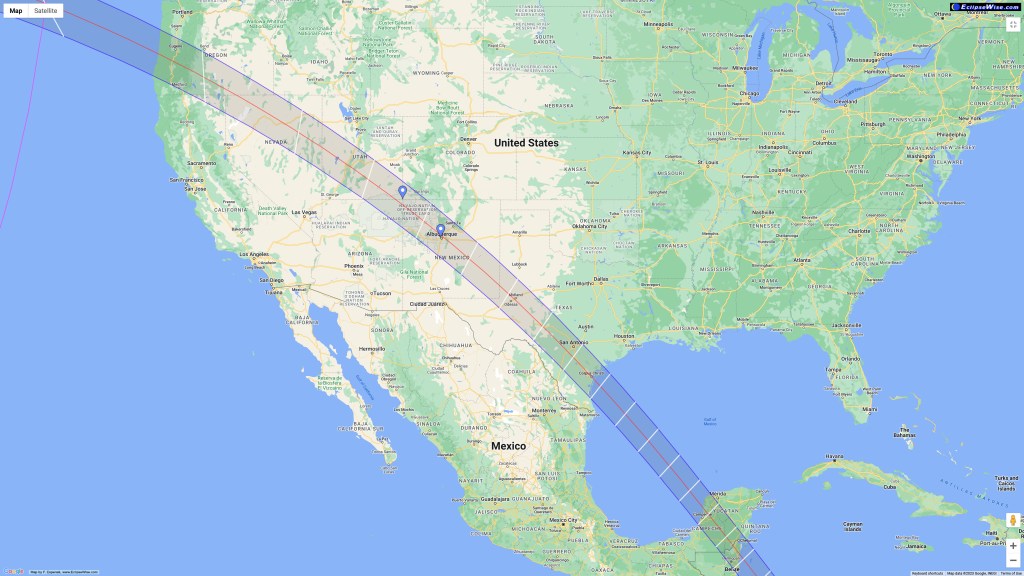
This is the path of annularity across the western U.S. To see the Moon pass centrally across the Sun (the “ring of fire”) you have to be somewhere in that grey path. Outside the path you will see only a partial eclipse of the Sun. For detailed and zoomable eclipse path maps like the one above, please visit EclipseWise.com.
NOVEMBER

Close conjunctions between the crescent Moon and Venus are always notable. Get up early on Thursday, November 9 to see the 26-day-old Moon shining only a degree below Venus. Venus reached its greatest angle away from the Sun on October 23. It is now descending back toward the Sun, but remains high in the morning sky in early November.
DECEMBER
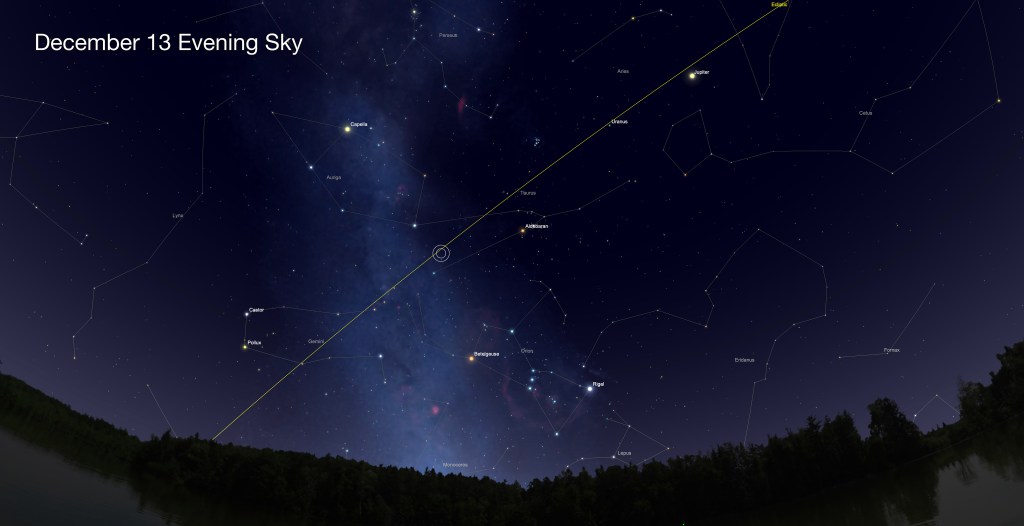
Though it usually puts on a better show than the summer Perseids, the Geminid meteor shower is not as popular because it’s cold! But this is also a good year for the Geminids as it peaks only two days after New Moon. The best night might be Thursday, December 14, but a good number of meteors should be zipping across the sky the night before on December 13, shown here. Start watching at nightfall and go as long as you can in the chill of a December night.

To download my free Amazing Sky 2023 Calendar in PDF format, go to my website at https://www.amazingsky.com/Books The PDF file can be printed out at home or taken to an office supply shop to be printed and bound.
Good luck in your stargazing and clear skies for 2023!
— Alan, January 15, 2023 / AmazingSky.com


Thank you so much for the year’s line-up of events…so much appreciated!!!